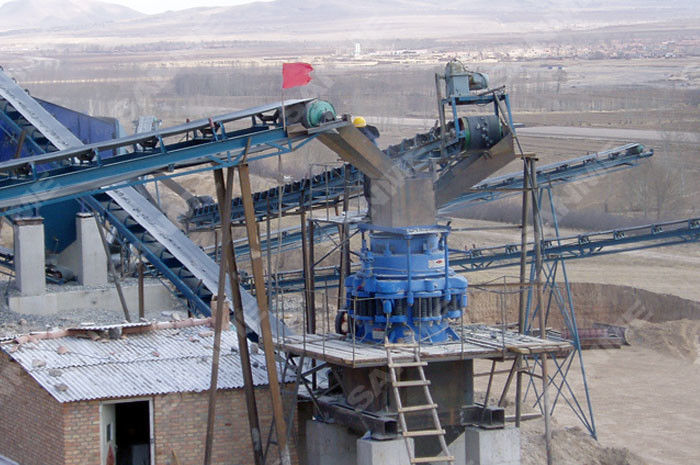
400Kw Metallurgy Feeding 460mm Cone Crusher Machine
2024-12-19
As a type of cone crusher, the spring cone crusher has a series of significant advantages, but also some disadvantages. The following is a detailed analysis of its advantages and disadvantages:
advantage
Efficient crushing: The spring cone crusher adopts the principle of laminated crushing, greatly reducing needle like materials and improving processing capacity. The combination of its high-performance crushing chamber type and high crushing frequency significantly improves the processing capacity.
Iron protection: The equipment design adopts a bidirectional iron release hydraulic cylinder, which allows the iron block to pass through the crushing chamber, reducing downtime caused by debris entering the crushing chamber and improving the reliability of the equipment.

Safe and durable: The spring cone crusher adopts a large-diameter spindle and a heavy-duty main frame, ensuring the equipment is sturdy and durable. In addition, its multi-point controlled independent lubrication system ensures dual protection of bearing lubrication, enhancing the durability and reliability of the equipment.
Easy to operate and maintain: Spring cone crushers are easier to automate, improving their reliability and lifespan. At the same time, lubrication and maintenance of the equipment are relatively simple, reducing maintenance costs.
Wide application range: Spring cone crusher is suitable for crushing medium and high hardness materials, such as iron ore, copper ore, limestone, quartz, granite, etc., and is widely used in metallurgical industry, construction industry, road construction industry and other fields.
shortcoming
Dust prevention issue: Unreasonable dust prevention devices may cause blockages in dust prevention pipelines, allowing dust to enter the lubrication system and cause contamination of lubricating oil and damage to the oil pump. Regular replacement of lubricating oil is required, which increases maintenance costs.

Insufficient protective devices: Sometimes the design of protective devices is unreasonable, which may cause the crushing chamber to be filled with ore after the crusher is stuck and stopped, requiring manual cleaning and affecting normal operation.
Limitations of crushing surface: The horizontal transmission shaft of traditional spring cone crushers uses a horizontal copper sleeve, which has a short service life, low speed, and high failure rate, resulting in limited production capacity.
Long maintenance cycle: The main vulnerable parts of the cone crusher, such as the dynamic hammer lining plate and the nail hammer lining plate, wear out quickly and need to be replaced regularly, increasing maintenance costs.
The overall structure of the spring cone crusher is bulky compared to modern hydraulic cone crushers, which may not be conducive to the handling and installation of the equipment.
Small crushing force and low output: Compared to some new crushing equipment, the spring cone crusher has a smaller crushing force and relatively lower output, which may not be able to meet some high-yield production needs.
In summary, the spring cone crusher has significant advantages in crushing efficiency, iron protection, safety and durability, as well as ease of operation and maintenance. However, there are also some disadvantages in dust prevention, protective devices, limited crushing surfaces, and maintenance cycles. When choosing and using, it is necessary to weigh and consider specific needs and scenarios.